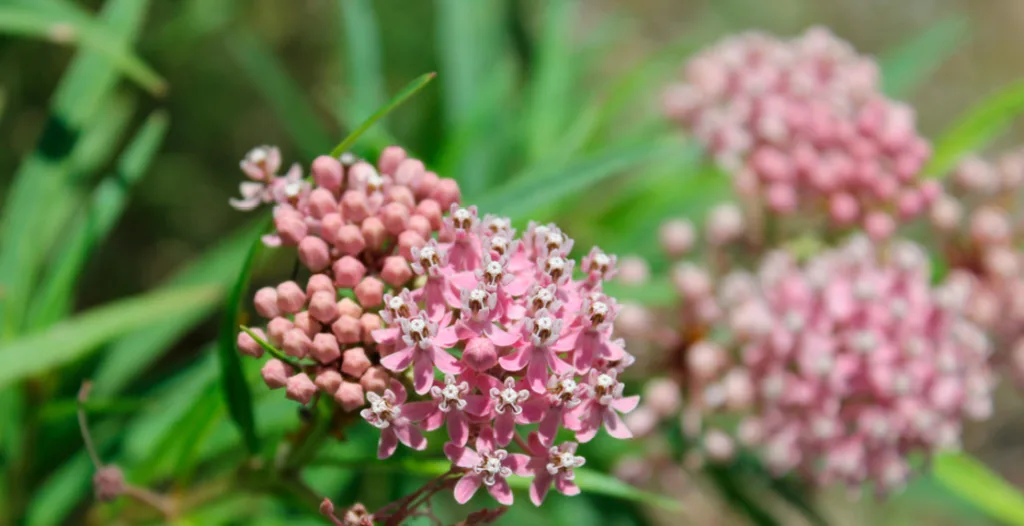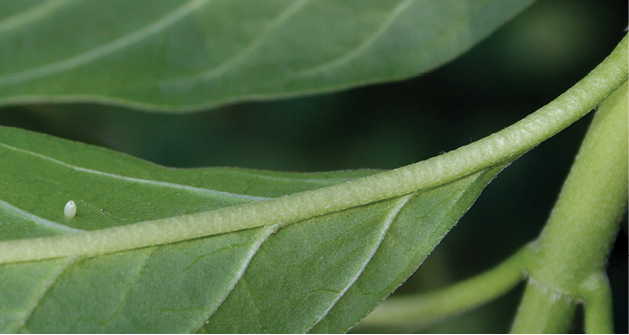What You Should Know
By Carol Clark, Collin County Chapter

Confused by all the fuss over Tropical Milkweed, Asclepias curassavica? You’re not alone. Internet sources about Monarchs and milkweeds are full of misinformation, partial truths, and ridiculous conclusions. Even scientific studies on the topic aren’t uniformly well conducted and trustworthy. You really can’t believe everything you read.
I’m going to address some of the most common questions I hear in my role as Monarch Watch Conservation Specialist and chair of the Bring Back the Monarchs to Texas committee.

Q: Is Tropical Milkweed native to Texas?
A: Definitely not! It’s not native anywhere near to Texas in spite of any retailers’ claims you’ve seen. Genetic studies show that it is closely related to South American milkweeds and not to any North American species. It wasn’t found along the Monarchs’ migration route until humans moved it there. The type specimen which gave this plant its scientific name was collected on a Caribbean island long after humans began moving north it for their purposes.

Q: Does Tropical Milkweed escape captivity?
A: Absolutely yes! I believe it is perfectly poised to become our next invasive plant headache in Texas. It produces seeds prolifically, which fly on the wind and germinate readily. There is photo and eyewitness documentation of it turning up in the wild where it was never planted. Gardeners also tell me often that it shows up uninvited in their yard and rapidly became a nuisance weed. It’s cheap and fast to produce commercially, so millions of new plants are sold each year.
Q: Does Tropical Milkweed provide ecosystem services equal to native milkweeds’ benefits?
A: We literally can’t know. Native milkweeds are crucial to dozens (maybe hundreds) of species of small creatures and only a couple have been well studied. Since we don’t know their complete life histories and needs, we can’t say that Tropical Milkweed serves them adequately. We might be shortchanging creatures we know little about and larger creatures up the food chain when we plant Tropical Milkweed. We do know that the native milkweeds they’ve been using for thousands of years do the job right. The best “do no harm” strategy is clearly to plant native species instead.
Q: What is the deal with OE?
A: OE, short for Ophryocystis elektroscirrha, is a devastating protozoan parasite of Monarch and Queen Butterflies. It infects caterpillars that eat contaminated foliage. OE causes deformity, reduced lifespan, reduced reproduction, and even death. Because Tropical Milkweed does not go dormant seasonally like our native milkweeds do, it presents fresh tender leaves in all seasons where the weather is warm, and those leaves are more likely to be contaminated with the spores of this parasite.
Dormancy is nature’s way of periodically cleansing the milkweed supply. Large nonmigratory populations of Monarchs have developed where Tropical has been heavily planted in South Texas and near the coast, and the incidence of severe infection with OE has risen dramatically in those places.
Q: Besides OE, does Tropical Milkweed pose other risks for Monarchs?
A: Maybe, but probably yes. Researchers are divided on this topic. There have been a lot of studies showing some degree of harm generally resulting in reduced Monarch health or fitness based on a lot of different criteria. Some studies appear to be solid and well done, some very poor indeed, and others reach demonstrably false conclusions.
Over time, more researchers have been convinced that Tropical Milkweed is best avoided at least until better research is available. Another potential problem for Monarchs which is still being debated is whether Tropical Milkweed causes them to break away from migrating and stop to lay eggs. In the fall, this would mean that both the parents and the offspring would perish and not reach the overwintering grounds, reducing the number of migratory Monarchs.
Q: Now that I want to plant native milkweeds to do the most good for Monarchs and other wildlife, how can I be sure I am buying the right thing?
A: Unfortunately, nursery labels have been misleading, or downright incorrect and maybe fraudulent in many nurseries. A nationwide grower shipped hundreds of thousands of milkweeds to major retailers with grossly mislabeled pots this year. Pots had the photo of a native milkweed but contained Tropical Milkweed instead.
Look for the complete species name on the pot and also check the plant itself. Mislabeled pots of Tropical Milkweed (Asclepias curassavica) most often try to pass for our native orange-flowered milkweed, Butterflyweed (Asclepias tuberosa). Asclepias tuberosa has stiff fuzzy stems and leaves, with hairs you should be able to see easily. Tropical Milkweed feels and appears smooth as a baby’s bottom, and unless you use some magnification you probably won’t see its hairs.
Arm yourself with information on which species are native to your region and likely to do well, by downloading a copy of the Texas Parks and Wildlife guide, Identification of Milkweeds in Texas. If you do find mislabeled pots, let the nursery staff and manager know. They usually aren’t even aware of the problem, so be kind but firm. Let them know that it’s not okay to trick consumers into buying things they didn’t want.
Carol Clark can be reached at carol.clark@npsot.org.
Photos by Carol Clark.
Editor’s note: if you suspect OE, please consider submitting your observations to Project Monarch Health at monarchparasites.org.
Did you like this article? It’s from our Fall 2023 Texas Native Plants magazine. Read more here

